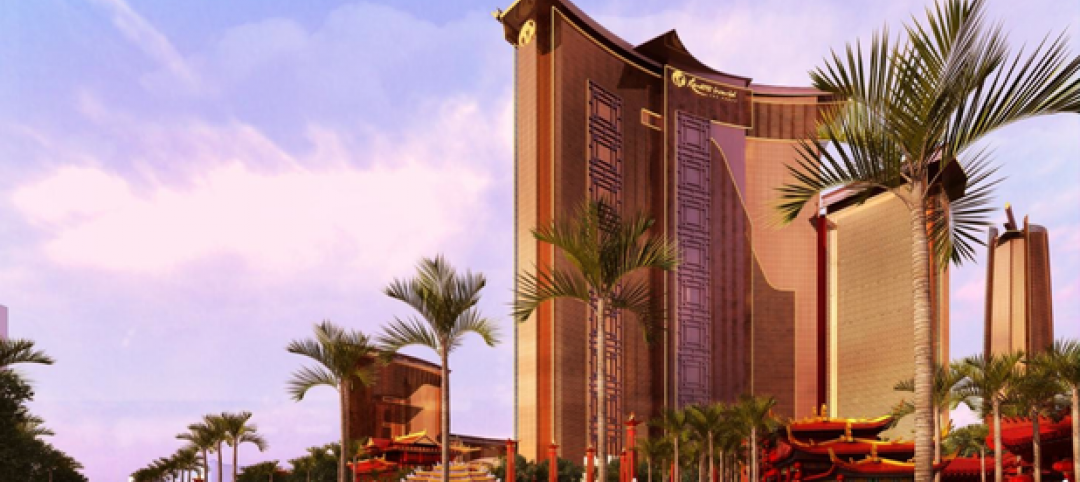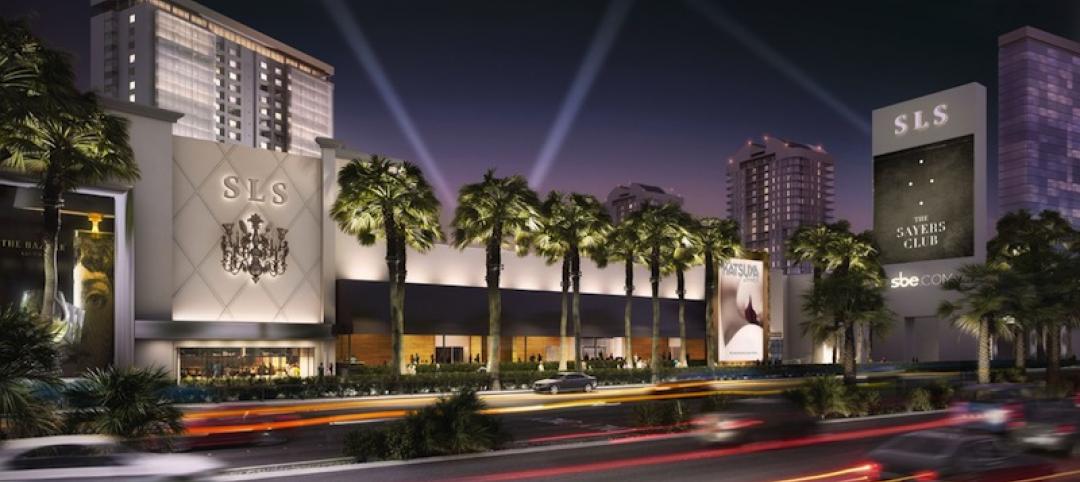When the Rocco Forte Collection opens the Verdura Golf & Spa Resort in Sicily in early 2009, the 200-room luxury property will be one of the world's newest lifestyle hotels.
Lifestyle hotels cater to guests seeking a heightened travel experience, which they deliver by offering distinctive—some would say avant-garde, or even outrageous—architecture, room design, amenities, and entertainment. In this respect, lifestyle hotels share some of the attributes of boutique hotels, but boutique hotels are usually smaller, independently owned one-offs, which is not necessarily the case with lifestyle hotels.
The outlook for lifestyle hotels is hot, according to a recent Ernst & Young report entitled “Global Hospitality Insights: Following the Lifestyle Trend.” They stand out in a competitive market that's based on sameness. Lifestyle hotels also command room price premiums within their respective markets and niches. According to E&Y, lifestyle hotels enjoyed a revenue-per-available-room annual growth rate of 22%, versus 10% for the overall hotel industry, from 2002 through 2007.
The report zooms in on eight global markets: the U.S., Asia, Europe, Latin America/Caribbean, India, the Middle East, Oceania, and Russia.
The U.S.—Land of Opportunity
Lifestyle hotels in the U.S. attract a broad range of travelers—not just hip 20-somethings—so the market is full of opportunity.
There are more than 400 lifestyle hotel properties in the U.S. Most are located in major cities in close proximity to shopping and entertainment. However, travelers are starting to look for alternative lodging outside major metropolitan areas and at different price points, so there's a growth in secondary markets.
These opportunities haven't gone unnoticed by some of the large, established hotel chains. Hyatt recently unveiled its Andaz lifestyle brands, and Marriott has launched Edition. Travelers' needs in the more affordable select-service segment are being met through Starwood's aloft and Intercontinental's Hotel Indigo brands. Many chains are creating consumer products exclusive to their lifestyle hotels and selling them to guests for domestic use.
At the high end of the lifestyle hotel market, hoteliers are partnering with high-fashion brands, such as Bulgari, Missoni, Versace, and Armani. In fact, these luxury lines are influencing lifestyle hotel trends not just in the U.S. but in Asia, Europe, Oceania, and Russia as well.
Asia—Fast Growth
Asia is home to some of the world's fastest-growing economies and some of the largest emerging markets (China, Southeast Asia), so there are many new markets in which to establish lifestyle brands—although it's not all that easy.
For one thing, Asia has long offered unique and unusual hotel architecture and high-tech accommodations where upscale travelers could find a heightened guest experience. Asian hotels also have a reputation for offering expert services in health, healing, spirituality, and relaxation techniques—concepts also now being marketed by some lifestyle hotels.
The region doesn't have a high concentration of lifestyle hotels, except for those run by a few established players, including Banyan Tree, Mandarin Oriental, Peninsula Hotels, and Shangri La. And while there is a massive number of existing hotels in Asia, large, established chains prefer to develop their three-, four-, and five-star brands before introducing lifestyle brands. Costs are also a major factor: Asian markets are some of the most expensive in the world for commercial real estate development.
Europe—Looking for Options
Lifestyle hotels are nothing new in western and central Europe, where they traditionally are luxury properties in major financial and fashion cities.
A significant number of Europe's lifestyle hotels are concentrated in Italy and the United Kingdom, but travelers are looking for more options in terms of price and location. As a result, lifestyle hotels are increasingly desired in secondary markets with a cultural flair and a wisp of adventure, such as Belgium, Norway, and Switzerland. Geographical diversity is expected to account for significant growth in lifestyle hotels throughout Europe, says the E&Y report.
As in the U.S., partnerships with consumer brands are opening the doors to many lifestyle hotels. Volkswagen has paired with Hotel Fox in Copenhagen, and the 110-room Hard Days Night Hotel opened in Liverpool earlier this year with, of course, a Beatles theme.
Latin America/Caribbean—Slower Pace
Cities in Latin American are still maturing into major tourist destinations, and they don't have a huge supply of guest rooms. As a result, the lifestyle hotel segment is growing at a much slower pace there than in the U.S. and European markets, although demand is expected to increase over the next three to four years as the region grows in popularity.
Significant opportunities can be found in mature, urban markets, such as Mexico City, São Paulo, and Panama City. Hotels in the Panamanian capital have been enjoying double-digit rate increases and significant occupancy growth. The greatest opportunities are in the select-service and mid-scale segments.
Lifestyle hotels are also expected to do well in such Caribbean destinations as St. John and the U.S. Virgin Islands. Lifestyle hotel trends in resort destinations are moving away from a single, specific experience (beach resort, spa retreat) and into design-driven total environments. In both urban and resort locations, the emphasis is on clean, modern architecture.
However, the region lacks local firms to open and operate lifestyle hotels, so growth is expected to come from foreign operators. And in the Caribbean, developers are opening mixed-use resorts with a significant residential component that cater to retirees and make it increasingly difficult for lifestyle hotels to compete.
India—Ready for Growth
The Indian market is ripe for lifestyle hotels. The subcontinent is experiencing strong economic growth, increased lodging demand, and more discerning travelers looking for a “Royal Indian” experience.
The country already has a share of lifestyle hotels, most of them concentrated in major cities (Bangalore, Mumbai, New Delhi) and in resort regions (Goa, Jaipur). While domestic hotel firms will continue to expand their offerings, significant growth in the lifestyle hotel segment should come from foreign hotel firms; it's estimated that India will be host to 40 international hotel brands by 2011.
As is true elsewhere, hotels that partner with high-end fashion brands are expected to account for many new lifestyle hotels, with Armani planning to enter the Indian market in the near future. Another market where lifestyle hotels are expected to grow: spas. Luxury properties offering health and wellness features addressing the mind, body, and soul (either with traditional Indian healthcare of Ayurveda or a fusion of the traditional with Western concepts) will continue to attract travelers.
Middle East—Unique Cultural Issues
What an unusual market. The Middle East has so much money and so many restrictions. Until recently, lifestyle hotels have been virtually nonexistent in the region, and while the segment is still in its infancy, rising oil prices, increased purchasing power, and demand for luxury properties are growing the market.
Here, too, lifestyle hotels are linking up with luxury labels, including Versace and Missoni. The first Armani Hotel is expected to open in 2009 in Burj Dubai, which will be the world's tallest building upon completion.
Another major trend influencing lifestyle hotels: Islamic culture. Two years ago, Kempinski Hotels launched the Shaza Hotel brand: no alcohol is served, but guests and visitors can get drunk on the elaborate showcase of Islamic art. All Shaza hotels are LEED certified, too.
A huge step forward in Middle East hostelry came earlier this year with the opening of Luthan Hotel & Spa, outside Riyadh. The Luthan caters exclusively to female travelers. Previously, women in Saudi Arabia could not book hotel rooms or stay in a hotel without being accompanied by a male.
Oceania—Positive Outlook
Traditionally, hotels in Oceania (Australia, New Zealand, and Fiji) have had specific themes: beach resorts or country lodges, for example. Today's globe trotters expect more diverse lodging options—brands, types of available rooms, and services—in both urban and resort markets, which leads to increased lifestyle hotel options.
Hot markets are Sydney and Melbourne, with secondary urban centers such as Canberra and Brisbane now starting to demand lifestyle hotels.
Breaking into the market can be difficult because it can be hard to secure financing. Operating costs also remain high (wages typically account for 30% of a hotel's annual costs). Land costs are very high, which might account for one of the hottest trends in the lifestyle segment: the conversion of older hotels into lifestyle properties.
The region's economies look positive for the short to medium term, with domestic travel going strong. What could prove worrisome could be the strength of the Australian dollar, which may diminish Australia as an attractive travel destination.
Russia—Looking to the West
The Russian hospitality market is still in its infancy, but it's poised for growth and is expected to look to the West for ideas and trends.
Currently, Rocco Forte's Hotel Astoria in St. Petersburg is the country's only lifestyle hotel; a second lifestyle property will open in St. Petersburg in 2009 as part of Starwood's W portfolio.
Currently, Communist-era relics account for most of the country's hotels, and there aren't too many of those. The entire country only has around 48,000 hotel rooms. Only 7,000-8,000 of the hotel rooms in all of Moscow are considered up to international standards.
Demand for lifestyle hotels is being driven not just by foreign travelers, but also by jet-set Russians who want the same lodging options back in Mother Russia that they enjoy outside the country. Moreover, Russia's nouveau riche have developed a passion for luxury brands, and hotels that partner with the top fashion labels will be most welcome.
Most of the growth is concentrated in Moscow and St. Petersburg, but Ernst & Young sees oil-rich Siberia poised for growth within a few years.
Related Stories
| Jul 2, 2013
LEED v4 gets green light, will launch this fall
The U.S. Green Building Council membership has voted to adopt LEED v4, the next update to the world’s premier green building rating system.
| Jul 1, 2013
Report: Global construction market to reach $15 trillion by 2025
A new report released today forecasts the volume of construction output will grow by more than 70% to $15 trillion worldwide by 2025.
| Jun 28, 2013
Building owners cite BIM/VDC as 'most exciting trend' in facilities management, says Mortenson report
A recent survey of more than 60 building owners and facility management professionals by Mortenson Construction shows that BIM/VDC is top of mind among owner professionals.
| Jun 5, 2013
USGBC: Free LEED certification for projects in new markets
In an effort to accelerate sustainable development around the world, the U.S. Green Building Council is offering free LEED certification to the first projects to certify in the 112 countries where LEED has yet to take root.
| Jun 3, 2013
Construction spending inches upward in April
The U.S. Census Bureau of the Department of Commerce announced today that construction spending during April 2013 was estimated at a seasonally adjusted annual rate of $860.8 billion, 0.4 percent above the revised March estimate of $857.7 billion.
| Apr 30, 2013
Tips for designing with fire rated glass - AIA/CES course
Kate Steel of Steel Consulting Services offers tips and advice for choosing the correct code-compliant glazing product for every fire-rated application. This BD+C University class is worth 1.0 AIA LU/HSW.
| Apr 24, 2013
Los Angeles may add cool roofs to its building code
Los Angeles Mayor Antonio Villaraigosa wants cool roofs added to the city’s building code. He is also asking the Department of Water and Power (LADWP) to create incentives that make it financially attractive for homeowners to install cool roofs.
| Apr 2, 2013
6 lobby design tips
If you do hotels, schools, student unions, office buildings, performing arts centers, transportation facilities, or any structure with a lobby, here are six principles from healthcare lobby design that make for happier users—and more satisfied owners.
| Mar 7, 2013
Vegas rebound: Genting Group acquires assets of stalled Vegas casino-resort
International hospitality giant Genting Group has announced a deal with Boyd Gaming Corp. to purchase the land and assets, including partially built structures, of the stalled Echelon casino-resort in Las Vegas.
















